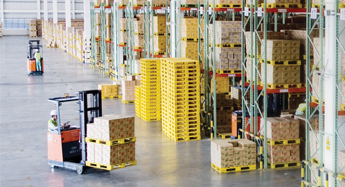The future of drone use - taking off or grounded by regulation?
What does every tech enthusiast want for their birthday? Probably an unmanned aerial device (UAD), more commonly known as a drone.
UADs are undoubtedly one of the gadgets of the moment with Amazon alone delivering 20,000 small UADs worldwide last Christmas, and 100,000 being sold around the world every month on current estimates.
As well as being increasingly popular with consumers, UADs are being used commercially for a plethora of purposes which are only likely to expand in coming years. The market for military and civilian UADs is predicted to be worth £59bn over the next 10 years and, by 2035, many expect UAD use will be widespread.
Vast sums of money are being pumped into UADs by corporations around the world; Samsung has set up a new research lab concentrating on UADs and other robotics and Facebook announced in 2014 that it plans to use UADs to carry internet signal to remote parts of the world. Companies like Amazon, Google and Alibaba are experimenting with deliveries by UAD; Amazon has been testing its Prime Air UAD delivery service in Cambridgeshire; Google outbid Facebook to buy Titan Aerospace, a manufacturer of high-altitude UADs; and Alibaba recently delivered ginger tea packets to 450 volunteer customers in China. DHL has announced the use of UADs for deliveries of goods such as medications to locations including the German North Sea island of Juist.
 For journalists, UADs can be a safe and effective method of obtaining footage in dangerous or inaccessible areas. More worryingly for unwitting celebrities, they could also potentially be used to take intrusive photos without the individual's permission or knowledge.
For journalists, UADs can be a safe and effective method of obtaining footage in dangerous or inaccessible areas. More worryingly for unwitting celebrities, they could also potentially be used to take intrusive photos without the individual's permission or knowledge.
Those in the farming industry may use UADs to take aerial images of their crops, which could help with planting, irrigation and pest management. UADs are also extremely useful for those building and maintaining tall or hard to reach structures, such as wind turbines. There are also numerous possibilities for UAD use in the public sector, for example, in law enforcement, traffic monitoring and emergency response.
There are a myriad potential uses for UADs but a world in which UADs fill the skies and are a banal feature of our everyday lives is only a real possibility if the UADs can be used safely and lawfully. For UADs to become mainstream, there has to be consensus on whether the benefits of UADs outweigh the risks, not only in commercial terms, but also legal ones.
UADs are classed as "aircraft" so their use must comply with applicable aviation law (see our article Flying low - aviation law and drones for more). More than 300 companies and public bodies, many of which are film, photography and production companies such as the BBC, already have permission to fly UADs in the UK, but global aviation laws are a considerable barrier to mass use.
Concerns have also been raised about more sinister uses of UADs. A University of Birmingham report emphasised the danger of UADs falling into the wrong hands: "the security threat posed by individuals misusing UADs is a serious one, whether for criminal or terrorist purposes … more thought needs to be given to their employment for malign purposes in the domestic environment". The report envisaged UADs being used for a range of nefarious purposes from launching terror attacks (and let's not forget they are already being used in war zones and to combat terrorism), to acting as a lookout for burglars.
Another major concern with UADs is privacy. UADs recording personal data may have to comply with data protection law (see Data and drones for more on data protection issues). UADs may also breach laws on confidentiality, privacy and harassment (see Drones - the privacy, confidentiality and harassment dimensions).
 If a UAD crashes, it could cause personal injury and/or damage to property. This may lead to claims and a market for UAD insurance is likely to open up accordingly.
If a UAD crashes, it could cause personal injury and/or damage to property. This may lead to claims and a market for UAD insurance is likely to open up accordingly.
There are concerns that current laws cannot adequately deal with challenges posed by widespread use of UADs and we may well see the regulatory framework adapt accordingly. The relationship between UADs and applicable laws and regulations is a tense one. If the legal environment becomes too restrictive, the predictions for the growth of UADs in our lives start to look over-optimistic. On the other hand, if it is too relaxed or fails properly to address the risks of using UADs, the consequences of abuse or misuse could result in disaster, for example, an out of control UAD bringing down a passenger jet. There is huge potential for consumer and commercial UADs but only if business models can be practical, legally compliant and safe.
If you have any questions on this article please contact us.


Tim Pinto
Tim look at the growing applications, both commercial and private, for UADs and the regulatory challenges they face.
"There is huge potential for consumer and commercial UADs but only if business models can be practical, legally compliant and safe."

